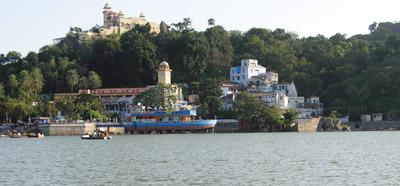
A pleasant retreat set amidst the lush forested hills, Mt.Abu is a green oasis in the barren desertscape that's Rajasthan.
Situated at the southern tip of the Aravali range, the hill retreat owes its cool climate to its rich flora covering the entire hillside that includes coniferous trees and flowering shrubs. The road leading to Mt.Abu is a curved one characterised by arid region dotted with huge rocks in weird shapes and high velocity winds.
The only hill station in Rajasthan, Mount Abu is more than just a summer retreat. Its stunning array of exquisite Delwara Jain temples, dating back 11th - 13th centuries, make it a popular pilgrimage centre.
'Abu' according to a legend, stands for the son of Himalaya, deriving its name from Arbuada, the powerful serpent who rescued Nandi, the sacred bull of Lord Shiva, from a chasm.
Mount Abu has been home to many sages and saints. Most famous of them was Sage Vashishtha who is believed to have created four agnikula Rajput clans from a fire-pit by performing a 'yagna' or fire sacrifice, to protect the earth from the demons.
The Yagna was performed besides a natural spring situated below Abu, emerging from a rock shaped like a cow's head an hence the site was called Gaumukh. Places of visit in Mt.Abu :
| 1. Gaumukh Temple | 2. Nakki Lake |
| 3. Delwara Jain Temples | 4. Adhar Devi Temple |
| 5. Sunset Point | 6. Honeymoon Point |
| 7. Trevor's tank | 8. Achalgarh |
| 9. Guru Shikhar |
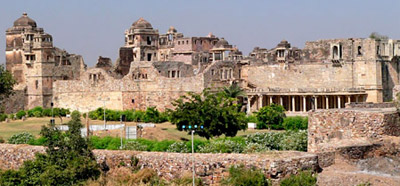
The pride and glory of Rajasthan, Chittor echoes with the tales of romance and valor unique to the Rajput Tradition. A ruined citadel, where the royal past lives in its imposing forts, graceful palaces and spectacular chhatris.
This fortified settlement has been ravaged thrice and each time the outcome was 'Jauhar' - when women and children immolated themselves on a huge funeral pyre while men donned in saffron robes of martyrdom rode out of the fort towards a certain death.
Alauddin Khilji was the first to sack Chittaur in 1303 A.D., overpowered by a passionate desire to possess the regal beauty, queen Padmini. Legend has it, that he saw her face in the reflection of a mirror and was struck by her mesmerising beauty. But the noble queen preferred death to dishonour and committed 'Jauhar'.
In 1533 A.D. during the rule of Bikramjeet, came the second attack from Bahadur Shah, the Sultan of Gujrat. Once again Jauhar was led by Rani Karnavati, a Bundi princess. Her infant son, Udai Singh fled to establish a new capital, Udaipur - a beautiful lake city, leaving behind Chittaur to be defended by two 16 year old heroes, Jaimal of Badnore and Patta of Kelwa. These young men displayed true Rajput chivalry and died after 'Jauhar' was performed. Immediately thereafter Akbar razed the fort to a rubble.
Chittaur was never inhabited again but it always asserted the heroic spirit of Rajput warriors. Places of visit in Chittaurgarh:
| 1. The Fort | 2. Vijay Stambh ( Victory Tower ) |
| 3. Kirti Stambh (Tower of Fame) | 4. Rana Kumbha's Palace |
| 5. Padmini's Palace | 6. Kalika Mata Temple |
| 7. Government Museum | 8. Meera Bai Temple |
| 9. Menal (90 Km) | 10.Sanwariya ji Temple (40 Km) |
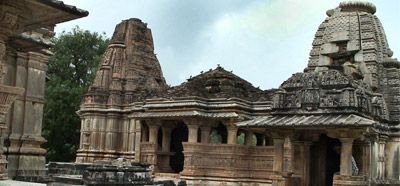
Nagda (anc. Naaghrida) was the old capital of Mewar. The chief relic, now extinct consists of the twin 'Saas - Bahu' temple of the 10th century. Spartan sanctums are here, wedded to sumptuous Mandaps, that of the bigger temple being more so. This latter in a closed one, richly carved both inside and outside, as compared to the open one in the other case. The group faces a large tank, the route to which is marked by a handsome torana or ceremonial gate.
The princes of Mewar considered themselves as ruling on behalf of Eklingji (Mahadeva) enshrined in an imposing temple in the neighboring Kailashpuri. Despite the recent glitz, the palace has an atmosphere. The complex has many other temples, including the very austere Lakulish of the 10th century with an imposing black statue of the defied Shaivite preacher of 2nd century A.D.
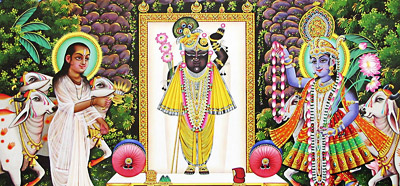
When Auranagzeb embarked on a policy of wholesale destruction of Hindu temples, the custodians of the idol of Shrinathji of Govardhan, near Mathura, left that place with the idol in search of a new haven. While several other princes were diffident, it was Maharana Rajsingh of Mewar who dared to provide refuge. In 1672 Shrinathji was installed in a new temple built in village Sihad, now called Nathdwara, on the banks of the Banas. Ever since, Nathdwara is a place of great sanctity for the Vaishnavas of Pushtimargi or Vallabha sect. Among other things, Nathdwara is known for its Pichhwais (large painting on cloth depicting legends from the life of Lord Krishna) and Haveli music (devotional music, akin to Dhrupad - singing, with compositions meant for various seasons, festivals and sections of the day).
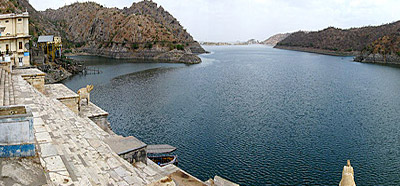
A stunningly situated artificial lake, built in the 17th century A.D. by Maharana Jai Singh is the second largest in Asia. Maharana Jai Singh at the time of foundation celebrated the occasion by giving away gold in charity after a Tuladaan ceremony. In the lake there are three islands whose inhabitants use Bhels (boats) to reach the shore. On the top of two nearby hillocks are two old palaces constructed by Maharana Jai Singh. A very fine view of the lake is available from these palaces. Graceful marble chhatris flank the embankment and beautiful summer palaces of the Udaipur queens. Jaisamand Island Resort is also worth visiting.
A trip to Jaisamand Wildlife Sanctuary allows a close encounter with the rich wildlife in their natural habitat. The fauna includes panther, wild boar, deer, four-horned antelope, mongoose and various species of migratory birds.
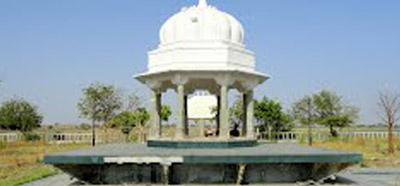
From Jaisamand, one can go on to Chawand. After the reverse suffered at Haldighati, Maharana Pratap took to the jungles and a guerilla mode of warfare. It was during this phase that Pratap acquired Chawand and made it his capital in 1585. It has been noted that the architecture at Chawand reflects a spartan defence - consciousness. It is said that Pratap was cremated here in 1597 A.D. in the nearby village Bandoli, on the banks of a small stream. Chawand continued to be the capital city till 1615. Besides, it was a major early centre of the Mewar school of painting.
Today, Chawand is known for the memorial erected for the nobble Pratap.

Renowned for some marvelously carved Jain temples in amber stones, Ranakpur is one of the five holy places of the Jain community. These temples were created in the 15th century A.D. during the reign of Rana Kumbha and are enclosed within a wall. The central 'Chaumukha' or four faced temple is dedicated to the venerated Tirthankara Rishabhji. Open on all four sides, it enshrines the four faced image of Adinath. Sprawling over 48,000 sq.feet, the temple is an astounding creation with 29 halls and 1,444 pillars - all distinctly carved.
Images of 24 tirthankaras are carved on the 'Mandaps' or porticoes in a corridor around the shrine with each mandap having a 'Shikhar' or spire adorned with little bells on the top. The gentle breeze wafting through the corridors move the bells creating celestial music all around the complex. Rising in three stories, the temple has four small shrines with 80 spires supported by 420 columns.
Two temples, dedicated to the Jain saints - Parsvanath and Neminath, face the main temple. The temples have beautiful carvings similar to that of Khajuraho. Another temple worth visiting is the nearby Sun Temple, an 8th century A.D. temple dedicated to the Sun god. The temple has polygonal walls, richly embellised with carvings of warriors, horses and solar detties riding splendid chariots.
More about Ranakpur